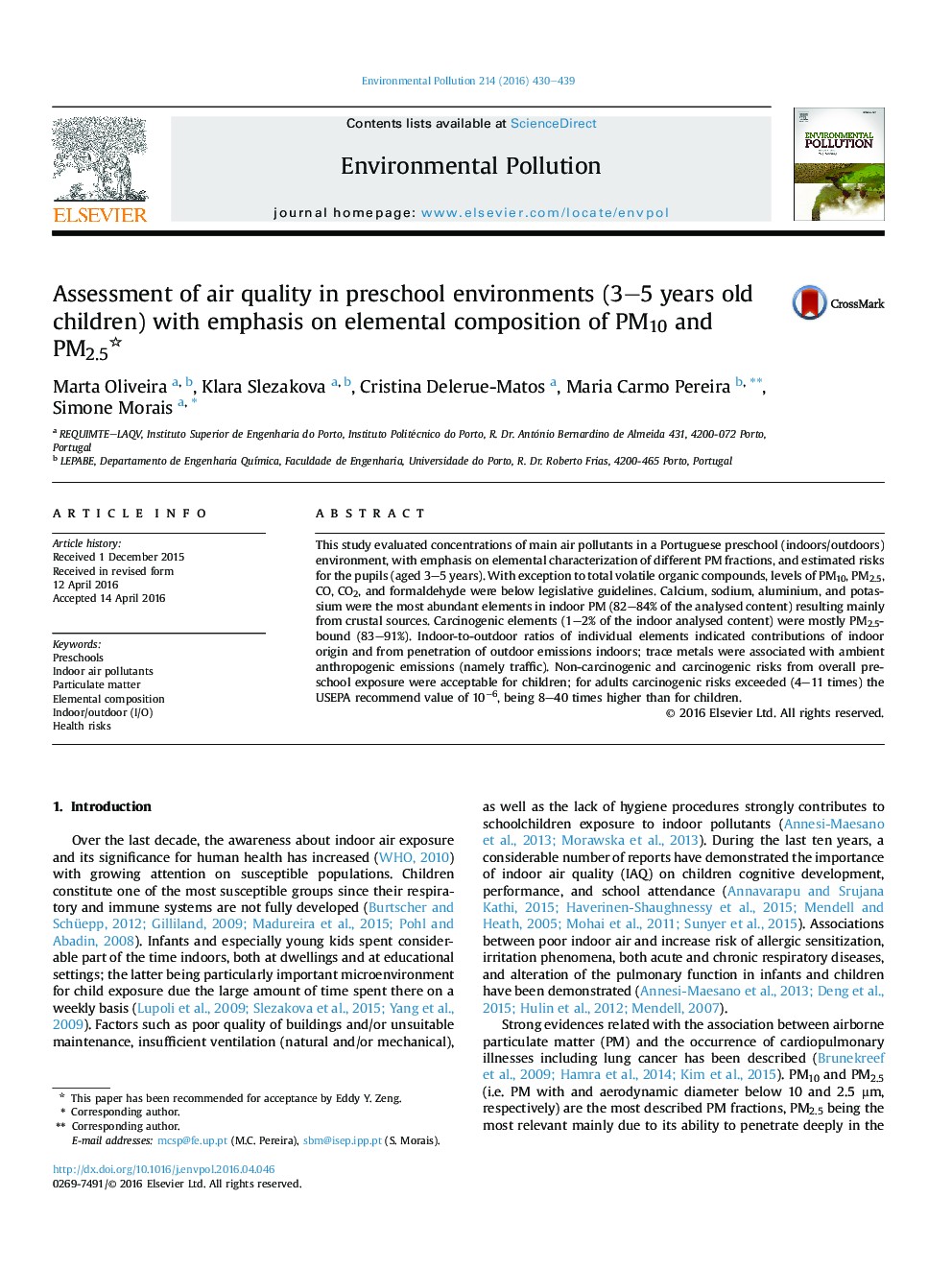| Article ID | Journal | Published Year | Pages | File Type |
|---|---|---|---|---|
| 6315298 | Environmental Pollution | 2016 | 10 Pages |
Abstract
This study evaluated concentrations of main air pollutants in a Portuguese preschool (indoors/outdoors) environment, with emphasis on elemental characterization of different PM fractions, and estimated risks for the pupils (aged 3-5 years). With exception to total volatile organic compounds, levels of PM10, PM2.5, CO, CO2, and formaldehyde were below legislative guidelines. Calcium, sodium, aluminium, and potassium were the most abundant elements in indoor PM (82-84% of the analysed content) resulting mainly from crustal sources. Carcinogenic elements (1-2% of the indoor analysed content) were mostly PM2.5-bound (83-91%). Indoor-to-outdoor ratios of individual elements indicated contributions of indoor origin and from penetration of outdoor emissions indoors; trace metals were associated with ambient anthropogenic emissions (namely traffic). Non-carcinogenic and carcinogenic risks from overall preschool exposure were acceptable for children; for adults carcinogenic risks exceeded (4-11 times) the USEPA recommend value of 10â6, being 8-40 times higher than for children.
Related Topics
Life Sciences
Environmental Science
Environmental Chemistry
Authors
Marta Oliveira, Klara Slezakova, Cristina Delerue-Matos, Maria Carmo Pereira, Simone Morais,
